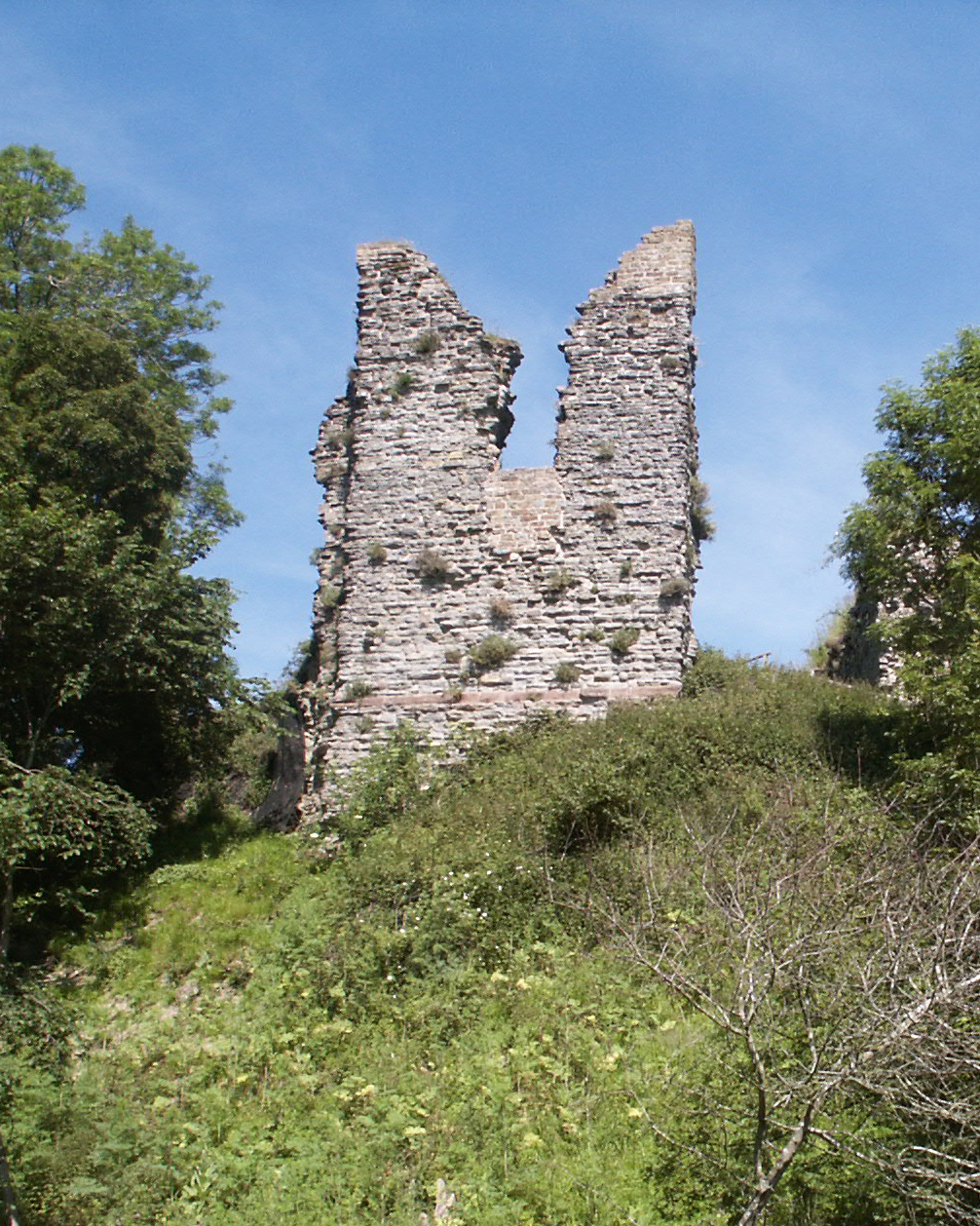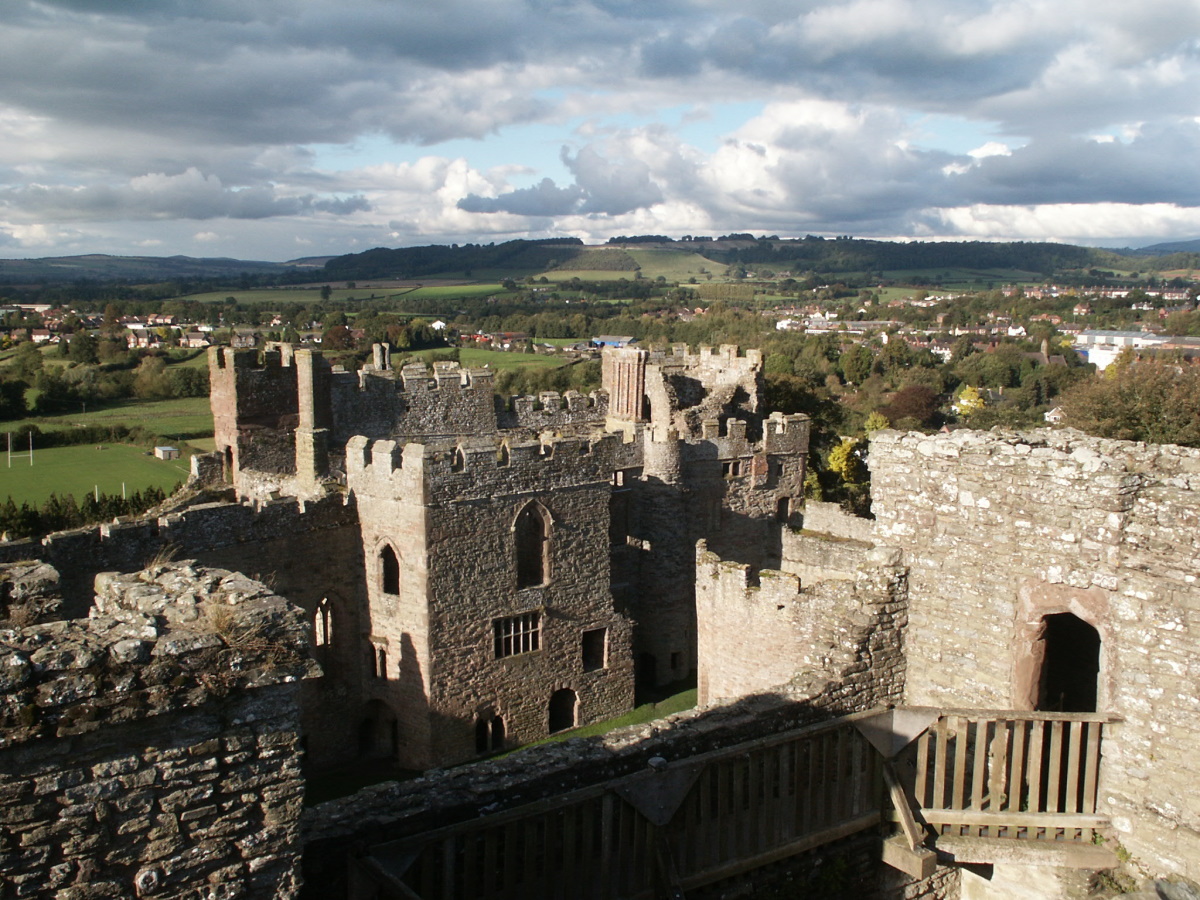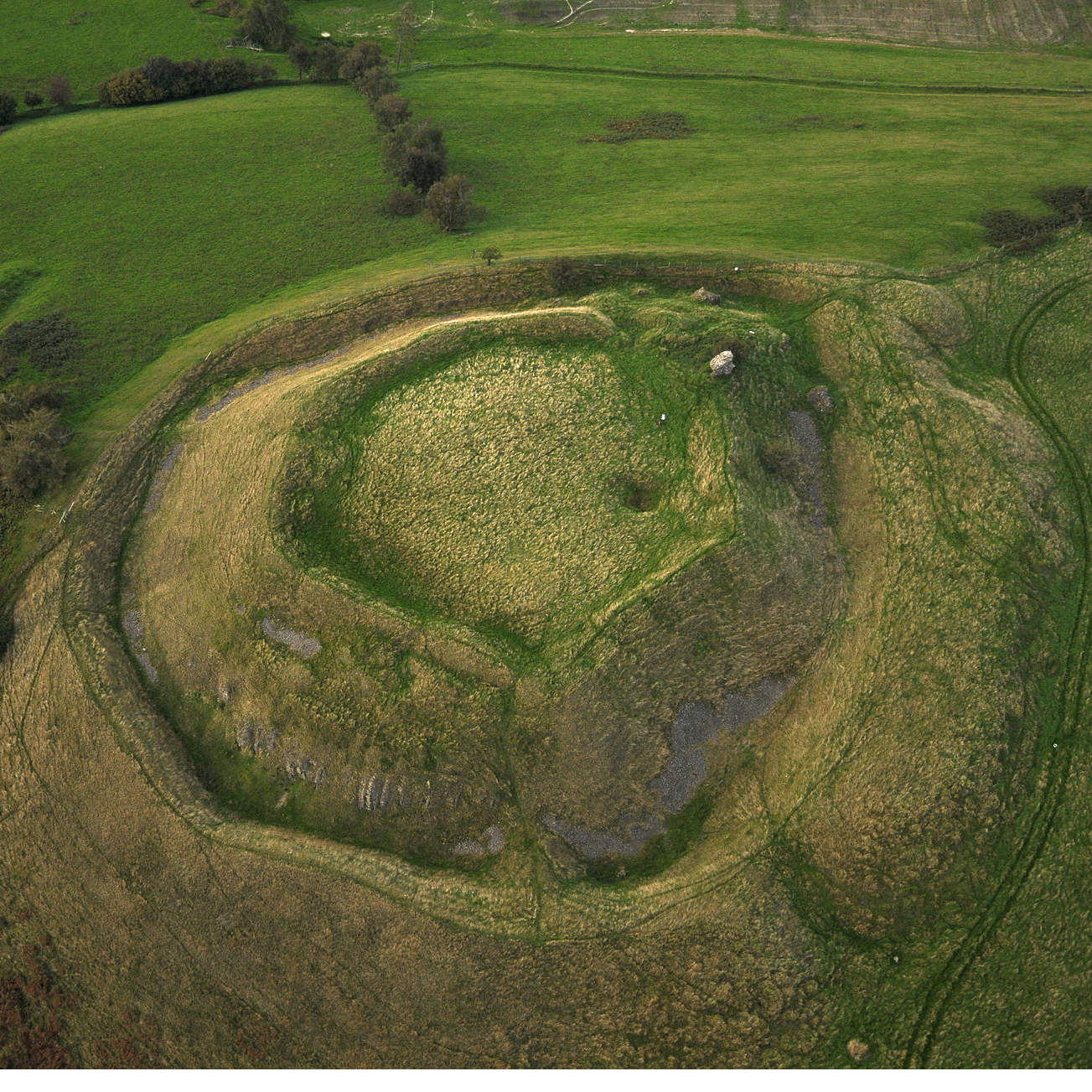
Wigmore
Introduction
The Mortimer family owned Wigmore Castle in North Herefordshire for about 350 years, right up till their male line failed in 1425. King William I gave it to Ralph Mortimer in 1075, or soon after, for services rendered during the Norman Conquest, and it was the Mortimers’ principal residence throughout the 12th & 13th centuries. Following an advantageous marriage, in 1308 they acquired nearby Ludlow Castle in Shropshire, which gradually became their preferred home when they were in the Welsh Marches. The same marriage brought them Trim Castle in County Meath, which became their home when in Ireland.
On this page are listed 38 of the castles owned by the Mortimers during their long history. Some of these were major fortresses which they built, rebuilt or enhanced over the years, but their involvement with others was often quite brief. Following the conquest of Wales in 1282-84, more peaceful times obviated the need for defensible strongholds, and many castles were allowed to deteriorate. Those that remained in use into the 15th century were usually developed as comfortable residences, or used as administrative or judicial centres.
The castles listed below are grouped here chronologically, using the approximate date from which the Mortimers first owned them. In each case there is a link to a short article about the castle. On the left the castles are listed alphabetically. Several other castles have featured in the 350 year story of the Mortimers of Wigmore, including Harlech, Kenilworth and the Tower of London.
Confiscations
In the 14th century there were two occasions when the estates of the Mortimers were confiscated. The first was in 1322 following the rebellion and imprisonment of Roger Mortimer (d1330), subsequently the 1st earl of March, and his uncle Roger Mortimer of Chirk (d1326). In most cases these lands were subsequently regained by the younger Roger Mortimer, following his accession to power in 1326. The second occasion was in 1330, following the earl’s execution and attainder. Again most of his estates returned to Mortimer ownership between 1354 and 1359 when Edward III granted them to Roger Mortimer (d1360), the 2nd earl of March. These confiscations affected a number of the castles listed below so, to avoid tiresome repetition, they are not mentioned again. It is important to remember, therefore, that the Mortimers were not in control of these castles during the periods 1322-1326 and 1330-1354/59 approximately.
The Mortimers’ Roots in Normandy
In the 11th century a branch of the Warenne family moved to the village of Mortemer-en-Bray in Normandy and took their name from the village. They lived in Mortemer Castle until after the Battle of Mortemer in 1054 when their estates were forfeit, for a perceived act of treachery. By 1074 they were established at St Victor L’Abbaye, 35 km away.
The Early Years: 1066 to 1200
After establishing himself at Wigmore Castle, Ralph Mortimer (fl.1075-1115) sought to conquer those parts of Wales that lay immediately to the west. To strengthen his position he built and garrisoned a castle at Cymaron about 20 miles away. But it was vulnerable to attack and its ownership changed several times before it was destroyed by the Welsh prince Llywelyn ab Iorwerth in 1215.

Ludlow
The Mortimers acquired other Welsh castles and held them for a time. These included Colwyn which was in Mortimer hands from time to time between 1141 and the 1290s. The castle at Rhayader was built by Roger Mortimer when he seized the lands at the end of the 12th century; it was retaken by the Welsh in 1202, who continued to hold it for much of the period until 1240, after which the site remained in Mortimer hands until their demise in 1425.
In England, Ralph built a castle at Cleobury Mortimer in Shropshire.
During the Anarchy of 1135-1154, Hugh Mortimer of Wigmore (d1181) supported king Stephen while Josce de Dinan in nearby Ludlow Castle supported the Empress Matilda. It has been suggested that the Mortimers built Aston Castle, halfway between Wigmore and Ludlow, as some sort of defence against attack from that direction. During the civil war several barons took the opportunity to appropriate former royal castles, and Hugh Mortimer (d1181) acquired Bridgnorth Castle. When Matilda’s son, Henry II, came to the throne he was determined to recover these castles for the Crown. Understandably reluctant to submit, Hugh Mortimer survived a siege at Bridgnorth until 1155 when he finally capitulated. Wigmore and Cleobury Mortimer were also besieged at that time and the castle at Cleobury Mortimer was largely destroyed.

Trim
The Thirteenth Century
In 1207, King John granted Knighton Castle on the Welsh border to Roger Mortimer (d1214) but it was handed back a few months later. Llywelyn ab Iorwerth destroyed it in 1215 but in 1230 it was granted to Roger’s son, Ralph Mortimer (d1246) on his marriage to Llywelyn’s daughter, Gwladus Ddu, and largely remained in Mortimer ownership thereafter. The nearby Norton seems to have had a similar history.
Ralph’s son Roger Mortimer (d1282) established and acquired an impressive collection of castles during his lifetime. As a young man, in the lifetime of his father, he fortified Cefnllys near Llandrindod Wells, and also Knucklas not far from Knighton, both on the top of hills. These castles were periodically captured and demolished by the Welsh and, indeed, Knucklas castle was very short lived being demolished by Llywelyn ap Gruffudd in 1262 and never rebuilt.
In 1247 Roger married the heiress Maud de Braose and thereby inherited a number of additional castles. By this time, Eardisland and Kingsland in Herefordshire were no longer of military significance, though Roger Mortimer probably died at Kingsland in 1282. Presteigne on the Welsh border was sacked by Llywelyn ap Gruffudd in 1262 and never rebuilt. About 8 miles west of Presteigne, Radnor was taken by Simon de Montfort in 1264 but regained by 1267. Maud de Braose was the daughter of Eva Marshal and Narberth in Pembrokeshire was part of her Marshal inheritance. This castle had a chequered Mortimer career, being forfeited to the Crown three times for separate acts of treason, in 1322, 1330 and 1402, before finally being granted to Edmund Mortimer (d1425), the last Mortimer Earl of March. In Ireland, Maud’s inheritance included Dunamase in County Laois, which was forfeited in 1330 and never recovered.
From the 1250s Aberedw was held alternately by Roger and Llywelyn ap Gruffudd. After the death of both men in 1282, Edmund Mortimer installed Walter Hakelutel who built a second castle, but by 1297 he was in dispute with the Tosnys who claimed the site. In 1263 Henry III sent his son. the Lord Edward, into Wales to campaign against Llywelyn. As part of his strategy, Edward took three castles owned by the de Bohuns and granted them to Roger. He held Brecon Castle for only a few months before it was taken by Llywelyn and, although he won it back, he finally lost control after a defeat in 1266. Hay-on-Wye was captured and held by Simon de Montfort for a short time, but then regained. Huntington near Kington didn’t surrender, but both castles had been granted back to the Bohuns by 1267.
Tinboeth north of Llandrindod Wells seems to have been built by Roger around 1267 but it seems to have been of no practical value after the final defeat of the Welsh. In 1273 Llywelyn ab Iorwerth built a new castle at Dolforwyn, provocatively situated on a hilltop overlooking the upper Severn valley, and uncomfortably close to the royal castle at Montgomery. As one of the commanders of the royal army, Roger captured this castle in 1277, being rewarded with the grant of both the castle and the lordship of Cedewain in which it was situated. It was ruinous by the end of the 14th century. In 1254 Henry III granted Painscastle to Roger de Tosny who subsequently lost it to the Welsh. Roger Mortimer recaptured it in 1276, but was forced to return it to the Tosnys a year later.
Roger died in 1282, much lamented by king Edward I. His third son, another Roger, was a resolute and forceful soldier like his father. For his strong support, Edward I granted him lands in north Wales, where he built Chirk Castle. Known generally as Roger of Chirk (d1326) the castle was acquired by his nephew, Roger Mortimer (d1330) 1st earl of March but it was finally lost to the Mortimers on his execution and attainder.
The Fourteenth Century
In 1301 Roger Mortimer (d1330) married the heiress Joan de Geneville. When her grandfather retired from active life in 1308, Joan came into possession of two major castles, which were part of the Lacy inheritance. With the need for defensive castles much reduced, Roger set about converting Ludlow into a comfortable palace. In Ireland he acquired the major fortress of Trim. Both of these castles remained in Mortimer hands till the male line failed in 1425.
Roger was castellan of Builth Castle in Powys between 1310 and 1315, his grandfather Roger (d1282) having held the same role in 1260. When Edward II gave Builth to his wife Isabella, she rented it to Roger and it remained in Mortimer hands. Around 1312, Roger was granted Clifford castle near Hay-on-Wye , but it was never of any military significance and was allowed to decay. Blaenllyfni in Powys was owned by the Fitzherberts, as was nearby Bwlch y Dinas. Around 1310 both castles were granted to Roger of Chirk (d1326) and they continued to be owned by the Mortimers. Following the dramatic fall of Hugh Despenser the Younger in 1326, Roger Mortimer (d1330) acquired his castle at Denbigh. Later he received Montgomery and both castles continued to be properties of the earls of March.
In 1369 Edmund Mortimer (d1381), 3rd earl of March, married Philippa, Countess of Ulster and granddaughter of Edward III. By that marriage the Mortimers acquired Clare in Suffolk and Usk in Monmouthshire.

Tinboeth